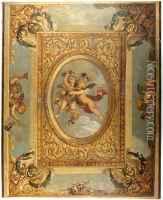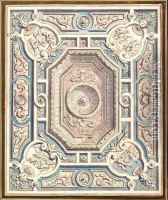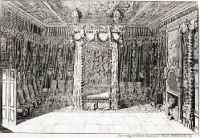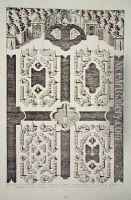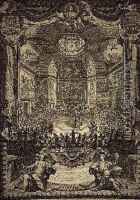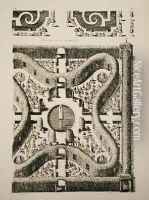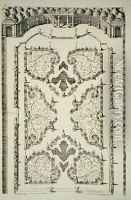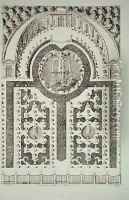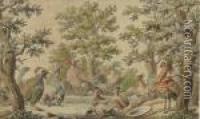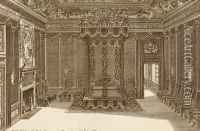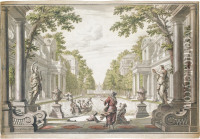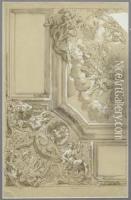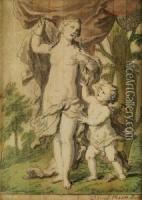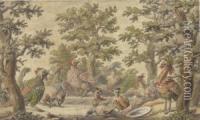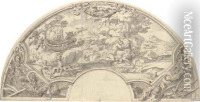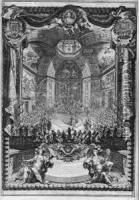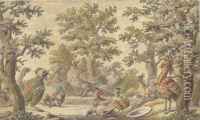Daniel the Elder Marot Paintings
Daniel Marot the Elder was a French-born artist who became one of the most influential designers and engravers during the late 17th and early 18th centuries. Born in Paris in 1661, he was part of a family with a strong artistic tradition; his father, Jean Marot, was also an architect and engraver. Daniel initially trained under his father and later worked for the court of Louis XIV. However, his Protestant faith made life in predominantly Catholic France difficult, especially following the revocation of the Edict of Nantes in 1685, which led to increased persecution of Protestants (Huguenots). In response, Marot fled to the Netherlands where he found a more tolerant environment and new patrons.
In the Netherlands, Daniel Marot became the court architect and designer for William III of Orange, who subsequently became King William III of England. Marot's work is characterized by the elaborate ornamentation of the Louis XIV style, yet adapted to Dutch tastes. His designs included a wide range of decorative arts, including tapestries, furniture, silverware, and interiors. Marot is particularly noted for his work in developing the Louis XIV style into what became known as the Dutch Baroque or William and Mary style, which reflected a more restrained opulence than the French model.
Marot's influence extended beyond the Netherlands as he published engravings of his designs, which were widely distributed throughout Europe. These works helped to disseminate the Baroque style and also contributed to the development of the Rococo. Marot's legacy as a designer and engraver is significant, and his contributions to the decorative arts continued to be felt long after his death in 1752. His impact was not only in his designs but also in the way he helped to integrate the arts across various mediums, from architecture to furniture, thus promoting a holistic approach to interior design that was ahead of its time.
